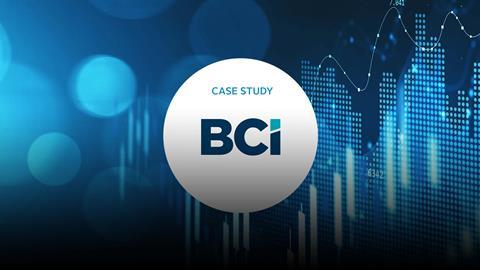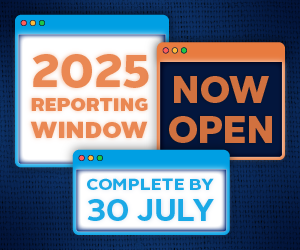- Signatory type: Investment manager
- HQ Country: Canada
British Columbia Investment Management Corporation (BCI) has developed an ESG risk and opportunity framework to integrate ESG analysis into all investment processes and measure and monitor potential implications of systemic ESG opportunities and risks. The framework enables BCI to measure and report holistic financial and reputational ESG opportunities and risks over time across BCI and client portfolios, allowing for more informed and comprehensive investment and policy decisions.
Developed over a number of years, with significant advances in 2020, the framework involved collaboration across BCI and input from clients. Given the nature of BCI’s clients and their long-term liabilities, systemic ESG issues such as climate change can play a significant role in the trajectory of long-term investment value creation.
The framework consists of five modules:
Materiality: to identify relevant material systemic risks for the total portfolio
Scenarios: developing and updating scenarios for each material systemic risk
A sensitivity tool: to quantify the financial impact of systemic risks on every sub-industry
Risk quantification: quantifying the potential financial risk impacts to the portfolio over time
Dashboards: to report and distribute data and results for each investment decision
By testing the sensitivity of industries and portfolio holdings, BCI can identify and target areas of opportunity and risk.
Why this approach?
Building on years of ESG and climate-related work at BCI, the investment manager set out to construct and implement a robust quantification process to calculate the financial impacts of ESG and climate opportunity and risk at the total portfolio level. Measuring the potential impacts from long-term systemic risks like climate change requires robust data and approaches that can appropriately consider the uncertainty of outcomes that increase as time progresses.
The framework incorporates inputs from the entire economic value chain to understand how physical, economic, and regulatory changes from systemic ESG opportunity and risk may impact investments. It is designed to support macroanalysis at a total portfolio level and microanalysis at a sub-industry or individual asset level.
The framework was developed to advance current standards of practice for measuring and monitoring systemic ESG opportunities and risks. The framework is also designed to be updated continuously and create up-to-date financial risk measurements of these opportunities and risks across the portfolio. It considers different water stress and climate change scenarios. Other systemic risks are being added over time.
Climate risk is modelled using scenarios from the International Energy Agency, which are layered with models from the Network for Greening the Financial System to form an inhouse ‘GDP Damages’ scenario. This provides an estimate of net economic impacts to growth-sensitive industries in addition to direct impacts to the energy sector. Layering these impacts provides incremental insight to sectors of the economy that base scenarios can’t capture.
Water scarcity is a key systemic ESG risk due to rising demand and the changing availability of fresh water in many parts of the world. Employing the ESG Risk and Opportunity framework and data from the World Resources Institute that provides global water stress scenarios, BCI developed scenarios that examine the potential impact of water risk on its portfolio. It translates water stress forecasts into water-intensity prices for each sub-industry modelled. With the resulting water-use costs, BCI estimates future changes to company expenses. It then estimates changes to market value for each scenario. The results are used to evaluate the portfolio exposure to water risk over time. This analysis can be adapted to better understand this risk when considering new investments and to further focus engagement efforts where companies are exposed to this risk.
BCI currently uses the outputs from the framework in client asset-liability modelling processes, investment reviews and asset management. During the development of the framework, BCI provided progress updates at key milestones to internal stakeholders, clients, and BCI’s board of directors. Following these updates, feedback from stakeholders was incorporated into the tool. To support stakeholder comprehension, BCI created dashboards to present stakeholder-specific results in a concise visual format. Dashboards also provide context about the nature of the risk measured to support enhanced understanding. Throughout the development process, BCI was mindful of how final results detailing risks and opportunities would be communicated to clients and internal stakeholders.
What were the outcomes, benefits and challenges? And what are the next steps?
This framework further supports the continued integration of ESG factors across BCI’s investment portfolio and provides important information for multiple stakeholders at varying points of the investment process. For clients, results show the vulnerabilities of different strategic asset allocations. For new deal due diligence, results are used to diagnose how potential investments mitigate (or exacerbate) climate risk for the asset class and total portfolio. For asset classes and portfolio managers, this analysis will contribute to a better understanding of the resiliency of certain types of investments to climate change.
Key challenges are still being addressed, including expanding currently available scenario data to cover all sectors of the economy, considering feedback loops between market participants and within economic systems, and limitations of current levels of granularity to understand the bottom-up impacts at the asset level for various climate risks. These challenges are being addressed through unique partnerships, the leveraging of multiple data sources, and applying existing financial risk modelling methodologies in an innovative fashion. BCI continues to refine and expand the scenarios and estimated impacts to incorporate a greater range of outcomes.
BCI shares its learnings and the framework methodology with industry peers and through an academic collaboration, with the goal of advancing information and approaches to measuring climate risk. Together with Canadian pension peers, BCI is working with a leading physical climate change risk provider to develop a fit-for-purpose physical climate change risk tool that produces financial impact assessments for various total portfolios. Results ensure that physical climate risks are priced in and adaptation plans to mitigate physical risks are in place. BCI is working alongside researchers from the University of Victoria and the Pacific Institute for Climate Solutions to research ways to integrate multiple climate change scenarios and data sets into financial risk modelling methodologies.
BCI plans to continue to develop its in-house climate scenario-modelling capabilities and expand scenarios to include other systemic ESG risks. It will also continue to integrate climate change scenarios into risk processes across client portfolios and BCI asset classes and develop asset class-specific dashboards.












